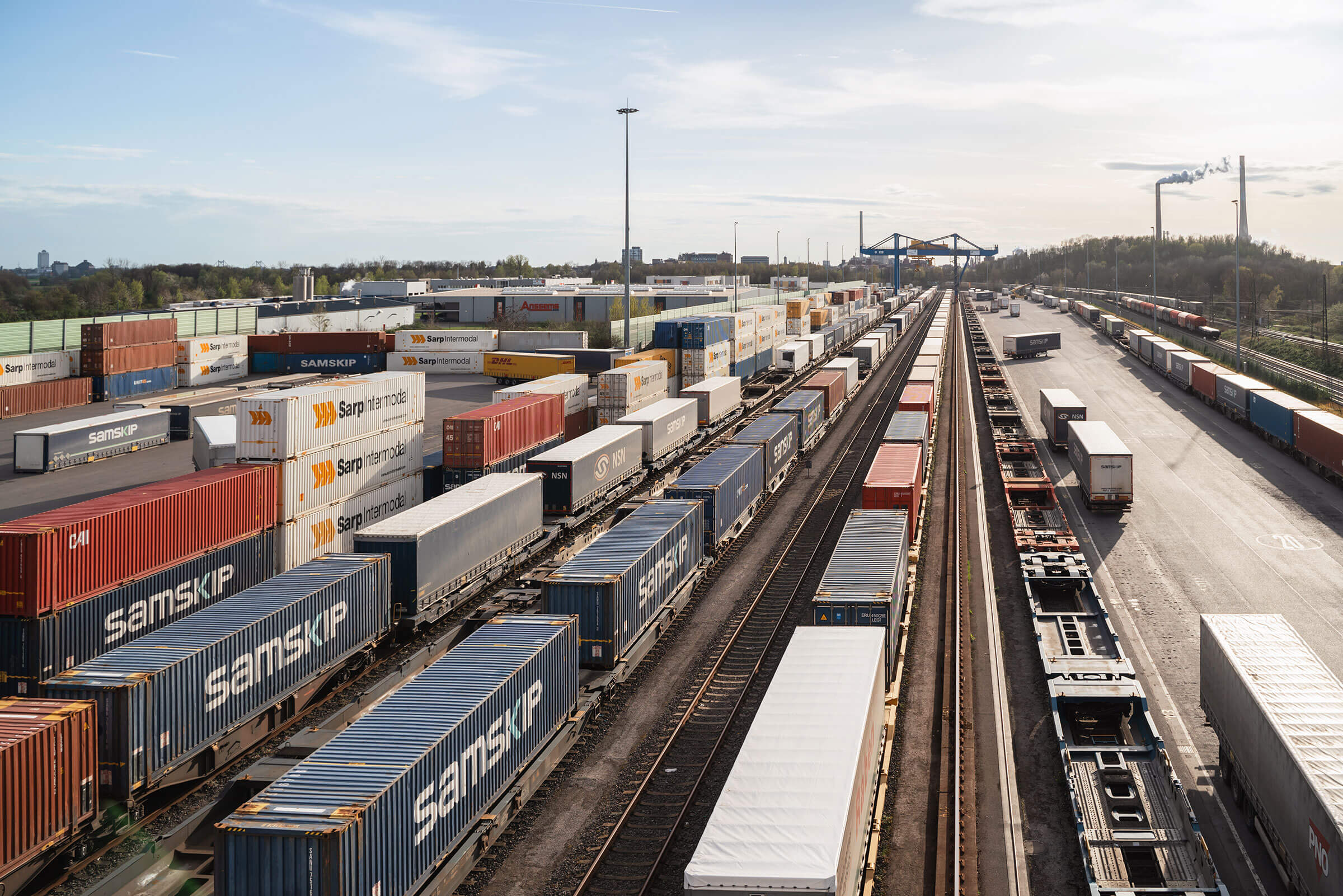
GRI Standards Statement of Use
Our Industry
The Multimodal Network
Our Corporate Strategy
Our Values
Industry Memberships
Corporate Governance

Welcome to Samskip’s 2024 Sustainability Report! Sustainability is more than a corporate commitment to us, it is central to how we operate, grow, and shape the future of logistics. We are proud to present this year’s report as a transparent and comprehensive account of the actions we’ve taken, the lessons we’ve learned, and the challenges we’ve faced.
This past year has tested the resilience of global supply chains and redefined the meaning of responsible business. In a landscape marked by shifting political and business priorities, Samskip remained steadfast: sustainability is a non-negotiable. Our strategy reflects this long-term view from daily operations to bold investments that shape a low-carbon future.
Our approach is shaped by industry experts and diverse stakeholder input. Building on last year’s Double Materiality Assessment, we have refined our focus to where we can create the most value and impact environmentally, socially, and economically. Through partnerships, innovation, and the dedication of our people, we are taking sustainability from ambition to action.
We know the journey doesn’t end here. As we share both achievements and areas for improvement, our aim remains clear: to empower our customers, colleagues, and partners to move forward together toward a sustainable logistics future.
Samskip BV has reported in reference to the GRI Standards for the period of January to December 2024.






%20a%20year.svg)








.svg)
.svg)







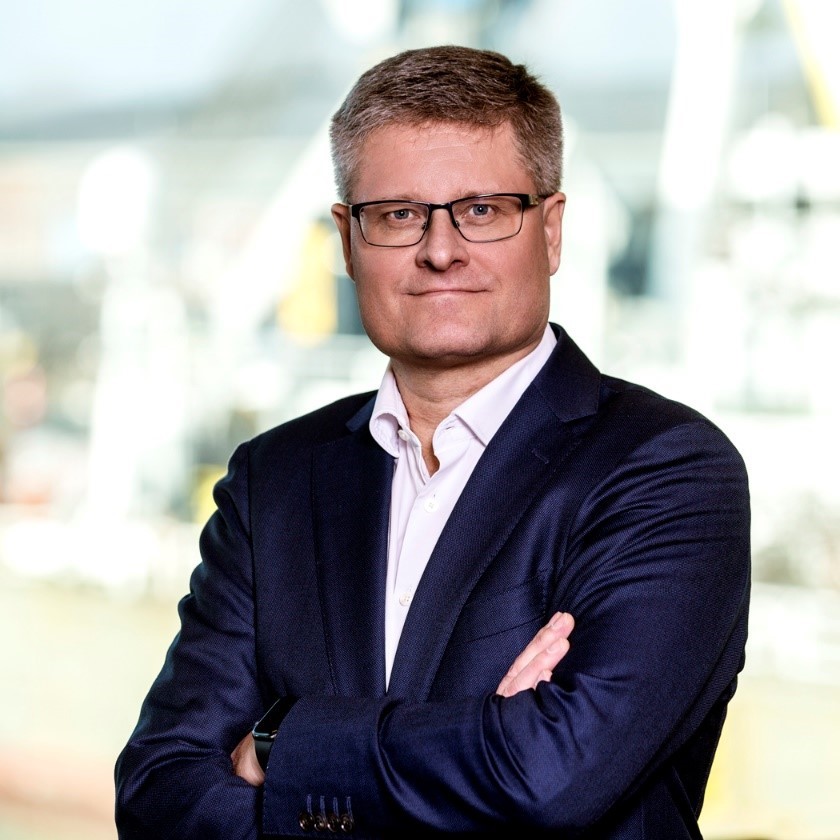

Dear reader,
I’m pleased to welcome you to our 2024 Sustainability Report – an honest reflection on our sustainability journey and the world around us. In the pages ahead, we’ll share how we’ve navigated a shifting landscape while keeping sustainability at the core of what we do.
2024 was an eventful year and, at times, deeply challenging. Global tensions continued to rise, and the world became less stable and predictable – which could clearly be felt in international trade. In the face of conflicts and major supply chain disruptions, predicting what lies ahead felt impossible. In this climate, resilience and flexibility to adapt became more important than ever.
Sustainability suddenly had to compete with other topics on the agenda. As global priorities shifted, some companies and governments paused or even reversed their climate ambitions – but the reality of the situation is not going anywhere. For us at Samskip, sustainability remains non-negotiable. The urgency to combat climate change has only grown, and we remain fully committed to driving meaningful change.
Throughout 2024, we focused on providing our customers with an excellent and reliable service, and strengthening our network. We believe that sustainability is not separate from performance – it underpins our reliability and resilience, enabling us to serve our customers better today and tomorrow.
Financially, 2024 brought its own headwinds. Rates fell, costs rose, and we were faced with a business environment not working in our favor. Moments like these reveal character: Do we stick to our sustainability commitments when times are hard? And if we do, how?
Strategy is about making trade-offs, and these will be tough at times. When shaping our investment plans for 2024, we faced a dilemma: Should we continue using biofuels to cut emissions now, or invest in hydrogen technologies that promise larger reductions in the future, even if it means scaling back our current biofuel use?
We chose the latter, prioritizing long-term impact over short-term gains. It wasn’t an easy decision because after reaching significant biofuel levels in 2023, reducing our usage meant accepting a temporary rise in carbon emissions. Yet, we believe this is the right path, one that will enable us to deliver the lowest possible carbon footprint in the years ahead. We’re investing today to build a cleaner, more sustainable tomorrow.
This long-term vision is embodied in our investment in the Samskip SeaShuttles, our two hydrogen-powered container vessels. With these ships, Samskip is not only securing a sustainable future for itself, but they contribute to the sustainable progress of our customers, the green hydrogen economy, and society in general.
Milestones like these are a team effort, built on a culture that promotes and celebrates sustainability. Our first Sustainability Day in early 2024 brought together so many relevant stakeholders, from policymakers to financiers, suppliers, ports and cargo owners, and of course many of our valued colleagues, all there to witness the steelcutting ceremony of our SeaShuttles, which marked the official start of the construction phase.
A powerful moment that brought us together and proved that the sustainable future of shipping is no longer a vision, it’s becoming a reality.
Of course, none of this is possible without our People. They are the hearts, minds, and hands of Samskip. While our environmental footprint is critical, we must also ensure we uphold social sustainability: a just, safe, and inclusive workplace where talent can thrive. I am proud of our diverse, international team, and how we balance strict safety and conduct standards with a culture that allows space for joy, collaboration, and personal growth.
To our colleagues, business partners, clients and friends, and all other readers:
I hope this report offers you insight and inspiration. But more than that, I hope it moves you to act. We cannot allow sustainability to slip down the agenda. At Samskip, our door is always open to those who want to work together for a better future because together it must be.
Sincerely,


Within the vast and complex web of global supply chains, freight transport holds a weighty responsibility: Shipping the world’s goods that keep our economies running. With added pressure to reduce its environmental footprint, the industry is facing an enormous decarbonization challenge.
Freight transport has been, and still is, heavily reliant on fossil fuels. The global freight transport market (including warehouses and ports) was responsible for 11% of global greenhouse gas (GHG) emissions in 2021[1].
With the demand for global freight transportation projected to double between 2019 and 2050, there are huge challenges for decarbonizing the sector[2].
These aren’t just numbers. It’s an urgent call for action for an industry standing at the crossroads of economic necessity and environmental responsibility. We must act now.
Different modes of transport: air, road, maritime, and rail have varying environmental impacts, with road being the largest contributor to CO₂e emissions, and rail the most environmentally friendly.

Road: This type of transport remains the largest emitter of CO₂e. Freight trucking vehicles accounted for nearly 65% of freight transport emissions[1]. The extensive reliance on diesel-powered trucks, combined with the growing demand for road freight transportation, has led to a significant rise in emissions.

Maritime: (including inland waterways): Water transport accounted for approximately 21% of the transport sector's emissions in 2022 [3]. While maritime shipping is still largely dependent on fossil fuels, it is still considered more energy efficient than freight trucking. And is one of the few industries that is regulated globally through the International Maritime Organization (IMO). [4]

Rail: Trains are generally considered to be one of the more environmentally friendly modes of transportation. Freight trains make up only 1% of global transport emissions [5].
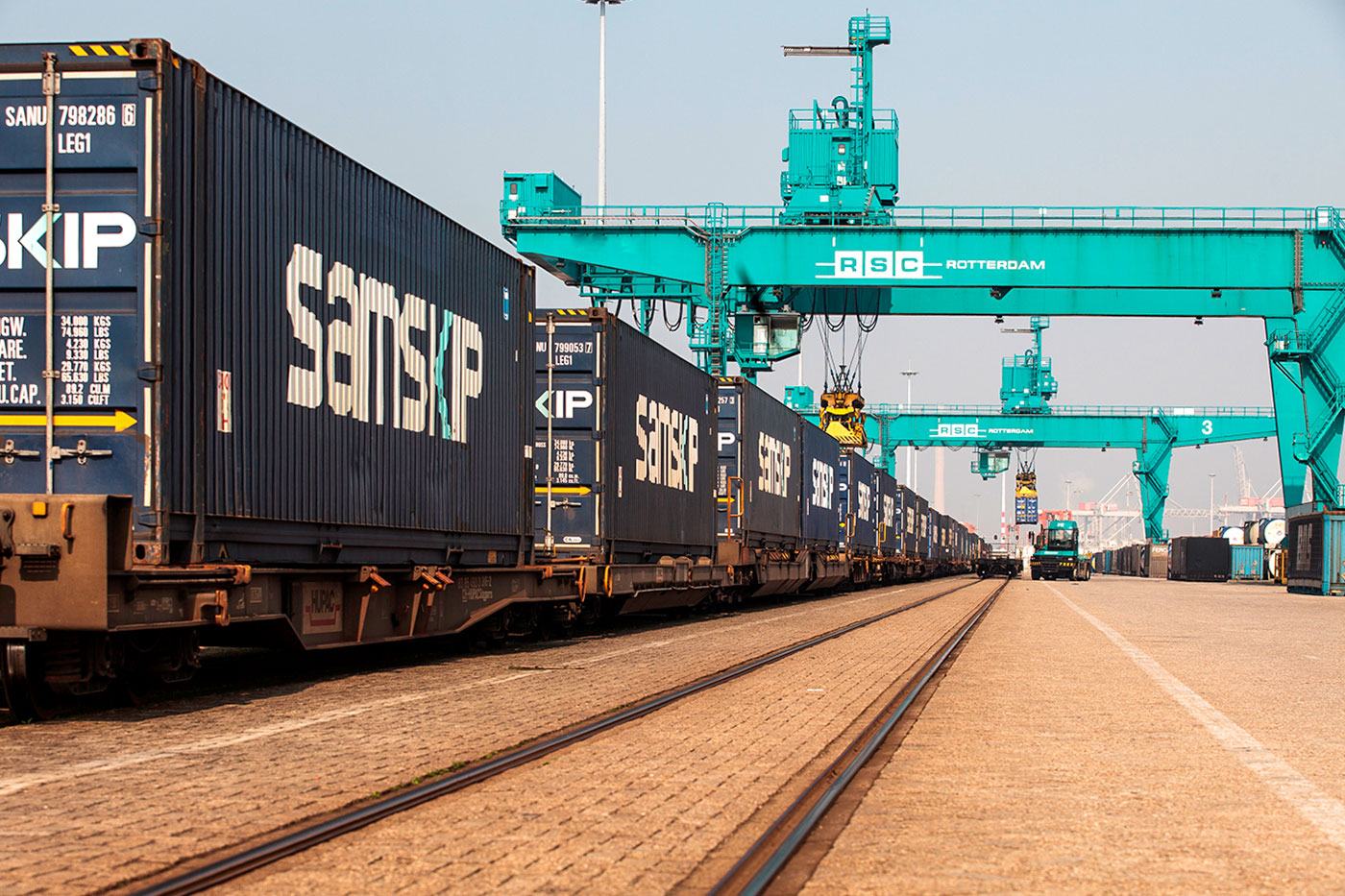

Transport and logistics companies are having to prioritize emissions reductions across all modes. Through the electrification of vehicles, use of low-carbon fuels, and improved operational efficiencies. When it comes to zero-emission trucking vehicles, crucial for decarbonizing road freight, this still requires significant public investment and policy support [6].
One thing is clear: to make a real impact, we need collaboration throughout the whole industry. Through international cooperation on policy, innovation, and regulatory frameworks, we can create lasting change, particularly given the global nature of freight transport. This collaboration must include efforts to harmonize emission standards, accelerate innovation in zero-emission vehicles and fuels, and address infrastructure gaps and global supply chain inefficiencies.
Our multimodal network is what sets us apart. Seamlessly combining sea, road, rail, and river transport to deliver efficient, resilient, and cost-effective logistics solutions, all while reducing GHG emissions and prioritizing sustainability.
We optimize each journey by leveraging our extensive transport network and strategically shifting cargo away from road transport, the highest emitter per ton-kilometer, onto more sustainable alternatives, like rail, barges, and vessels. This approach enhances energy efficiency and significantly lowers the carbon footprint of every shipment up to 80% compared to road-only transport.
No matter the destination, we leverage the many different transport solutions that our multimodal network offers, always opting for less energy- and carbon-intensive modalities to transport our customers’ goods. As road freight transport has the highest emissions per tonne of goods per kilometre, we make every effort to move cargo off the roads, and on to our vessels, barges, and trains.
One example of Samskip’s ongoing commitment to a multimodal network is the expansion of our rail services at the Duisburg terminal, strengthening connections between Northern and Southern Europe and offering a reliable alternative to road transport. Or our collaboration with the Matrans Rotterdam Terminal, which is set to become a key multimodal hub to connect our sea-going vessels, trains, and inland barges.

Innovative tools like our carbon footprint calculator provide visibility into the environmental impact of different transport routes, allowing our customers to compare multimodal options against conventional road transport. By making emissions reductions visible and showcasing the CO₂e saving benefits of our multimodal network, our customers can make transparent and informed decisions that reinforce our shared commitment to a sustainable future.
The multimodal approach is the foundation of our work, the way we move goods across the world, shaping a smarter, environmentally conscious, and more responsible logistics industry. This year we continued to push the boundaries further, significantly avoidance emissions by ~60-80% for key routes.

By combining rail, sea, and road, our routes from Venice to Raunds we cut 1,487 kg of CO₂ per container and Weert to Northampton another 347 kg of CO₂ per container. This is a clear win for both efficiency and the environment.
Launched in 2020, our Corporate Strategy is grounded in our values, vision, and mission, and structured around five strategic pillars, with Sustainability at the center.
For each pillar, we have set clear targets and KPIs. Our targets are not just numbers; they are milestones that inspire us to continuously strive for meaningful impact.
At the heart of our strategy is our vision: Make Green Logistics Easy.
In the middle of the framework stands the Sustainability pillar, taking a central role in our strategy. Sustainability is not a separate goal; it is our aim to embed it into the very core of how we operate and develop as a company.
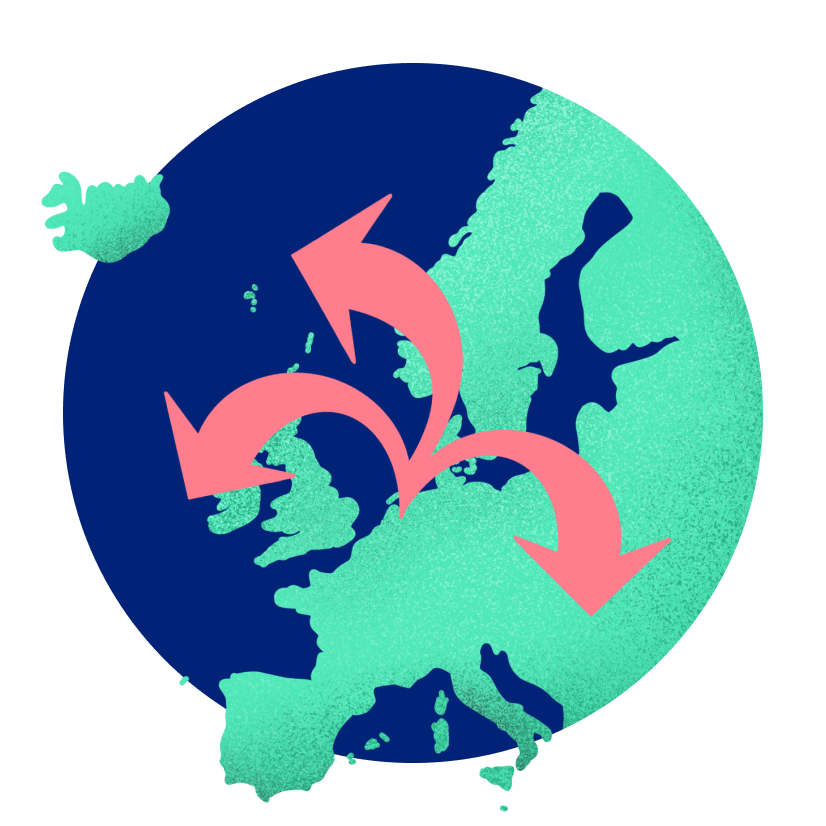
Continuously develop our Profit-driven Network

Be Customer Centric in our decision making

Put Sustainability at the centre of our company

Empower Our People to reach their full potential
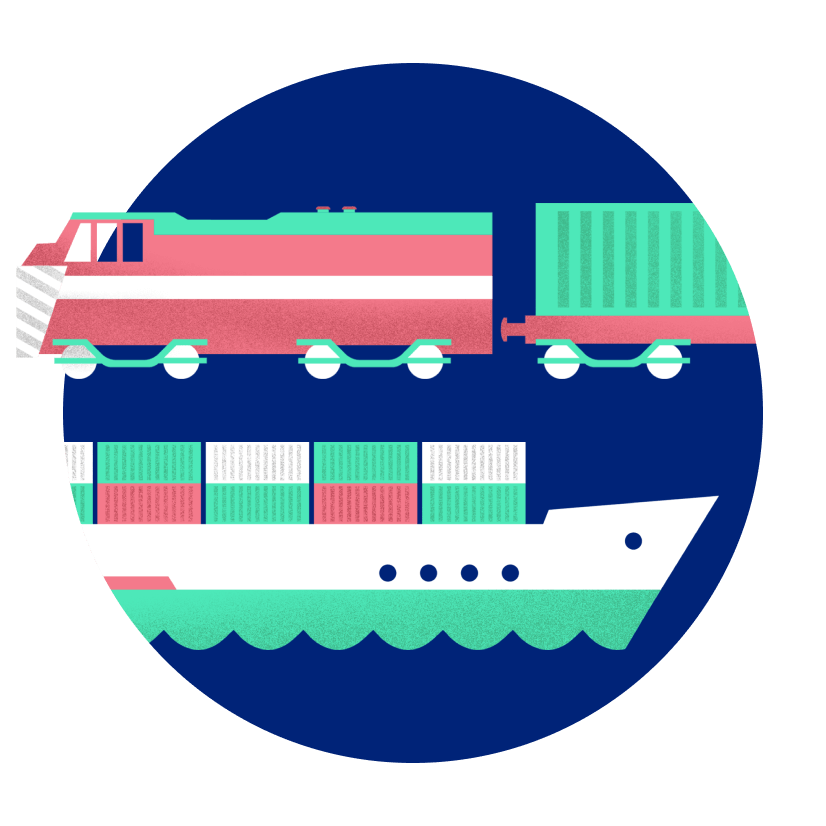
Achieve and sustain Operational Excellence
Through this strategy, our focus is on strengthening our network, being customer centric in decision-making, empowering our people to reach their full potential, reaching and maintaining operational excellence, and critically, to put sustainability at the heart of everything we do.
We believe that opportunities are created by innovating, by challenging the status quo, thinking critically and creatively.
We are committed to our people, partners, and planet, and take responsibility for our actions and their impact on the world around us.
We are reliable professionals that deliver on our promises to our people, partners and customers.
We collaborate and help each other to succeed; together we create an inspiring place to work; together we win.
Our recent corporate strategy was launched in 2020, marking a defining moment when Samskip made a firm commitment to sustainability. This then led to the development of our Sustainability Strategy later in 2020, a focused plan aimed at building a better, more sustainable Samskip. Since then, we have invested significant time, effort, and resources into turning this commitment into action, further shaping the future of Samskip.
At Samskip, we believe that collaboration across our industry is key in driving sustainability forward by setting standards and sharing lessons learned.
Working together accelerates the development of sustainable technologies and establishment of industry-wide standards that benefit us all. By learning from each other's successes and setbacks, we refine our sustainability strategies and avoid duplicating efforts. In the end, many of us have the same goals and by developing a collective approach, we are strengthening the industry's resilience to tackle future challenges.

The KVNR promotes and protects the common interests of Dutch shipping companies on a national, European, and global level. As a member, Samskip actively participates in committees and working groups regarding key regulatory and policy decisions on maritime matters.

The UK Chamber of Shipping is the trade association with the mission to create a greener shipping industry. Samskip is specifically involved in the decarbonization work, supporting the urgent need for the shipping industry to commit to net-zero by 2050.

The International Union for Road-Rail Combined Transport promotes intermodal transport and facilitates the enhancement of the sector throughout European political authorities and diverse governing bodies of the European Union, with an emphasis on the sustainable mode of long(er) distance freight transport.

Smart Freight Centre (SFC) is an international non-profit organization focused on reducing the emission impacts of global freight transportation.
Our Sustainability Manager reports directly to our Director of Business Development, who reports to our CEO. Our Sustainability Manager decides on day-to-day sustainability issues, and our Management Board makes high-impact decisions that affect the company at scale.
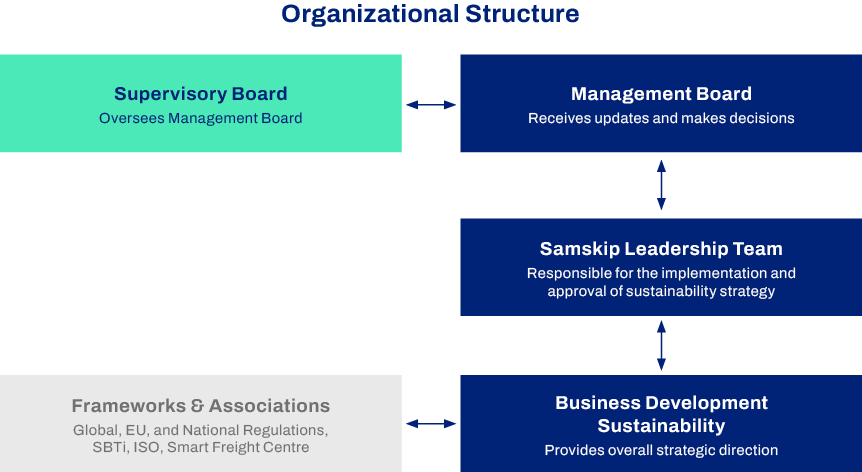
The company has two boards: the Supervisory Board and the Management Board.
The Supervisory Board, which includes members of both Icelandic and Dutch nationality, supervises the Management Board, and is elected by the company's shareholders. There is a supervisory board member dedicated to sustainability topics, and the board is regularly informed by the sustainability team on updates and pressing issues.
The Management Board, on the other hand, is responsible for the daily management of the company and holds the highest decision-making power. It is composed of C-level executives, responsible for developing, approving, and updating the corporate strategy, mission and vision statements, policies, and sustainability-related goals. The Management Board oversees organizational due diligence through the financial, legal, operational, quality, and sustainability departments.
The Sustainability Team supports both boards and provides detailed research and strategic developments to enhance Samskip’s environmental, social, and long-term business impact, identifying opportunities while minimizing risks. Our Sustainability Manager reports to the Director of Business Development, who then reports to the CEO, who also serves as Chairman of the Management Board.

Samskip’s operations span multiple regions, with key activities based in Western Europe, the Iberian Peninsula, the United Kingdom and Ireland, Iceland, Norway, Sweden, the Baltic states, and through its Global Forwarding services. These diverse regions reflect the company’s broad logistical reach and strategic presence across Europe and beyond.
